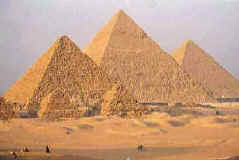picture from : http://www.thebritishmuseum.ac.uk/
Djed Pillar is a fetish which was used by the ancient egyptians as a symbol for stability and duration.
The oldest appearance for the Djed Pillar till now appears in the decorations in the funerary complex of king Djoser ( third dynasty) in Saqqara. It was also used as an amulet at the end of the Old Kingdom and it also appeared among the decorations of the coffins specially during the New Kingdom.

the Djed Pillar among the decorations of the funerary complex of king Djoser
Egyptian Museum in cairo
Many conceits were conceived about the origin of that figure representing the Djed Pillar, it was related with the God Wsir in two conceits:
- The first was in the Pyramid Texts from the Old Kingdom which tells that the form of the Djed Pillar represented the Cedar which embraced the coffin of Wsir in Byblos.
- The second was mentioned in the Book of The Dead ( chapter 155 ), it tells that the form of the Djed Pillar represented the backbone of the God Wsir.
It was also imagined to be a very old representation of a coloumn used in the harvesting rites or may be an old representation of man's penis but gradually the ancient egyptians forgot this representation and kept on sanctifying the Djed Pillar after relating it with other gods.
The Djed Pillar was figured in many forms like the human figure holding the { WAS } or the { ANKH } signs or that figure in the osirian form, It was also figured sometimes with the Isis Knot { TYT } like the decorations on the outmost burial chapel of king { TUT ANKH AMUN }.

pictuer from: www.touregypt.net
As an amulet the Djed Pillar was used in nearly most rites specially that of gods { WSIR }, { SOKAR } and { PTAH }. Mostly known of these rites is the { Raising of the Djed } which is thought to be initiated in the harvesting festivals then turned to be an independent ritual and sometimes it was merged with the { SED } festival like that of king { Amunhotep III }.
Refrences
Rundle Clark, Myth and Symbol in Ancient Egypt.
Carol Andrews, Amulets of Ancient Egypt.
Manfred Lurker, Gods and Symbols in Ancient Egypt.
Wallis Budge, From Fetish to God.
Wallis Budge, Osiris and the Egyptian Resurrection






 Since the Old Kingdom, the Mourning representations always appeared in the funeral procession scenes as the deceased was accompanied on the way to his tomb by 2 female Mourners, one at his head and the other at his feet, represnting goddesses ( ISIS ) & ( NEPHTYS) bewailing the while searching for god's ( WSIR ) coffin { after his brother, god ( SET ) locked him in a coffin throwing it into nile } till they found it in BYBLOS.
Since the Old Kingdom, the Mourning representations always appeared in the funeral procession scenes as the deceased was accompanied on the way to his tomb by 2 female Mourners, one at his head and the other at his feet, represnting goddesses ( ISIS ) & ( NEPHTYS) bewailing the while searching for god's ( WSIR ) coffin { after his brother, god ( SET ) locked him in a coffin throwing it into nile } till they found it in BYBLOS. 
 Men rarely or never showed their sorrow and Blue was occasionally the prescribed colour for Mourning dress.
Men rarely or never showed their sorrow and Blue was occasionally the prescribed colour for Mourning dress. 


